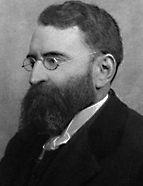

Following his collaboration with the City Council, he published Saneamento do Porto. Relatório apresentado à Comissão Municipal de Saneamento, 1888 (Sanitation in Porto. Report presented to the Municipal Sanitation Commission, 1888). After addressing urban sanitation and proposals for intervention, he added information on the past of municipal hygiene, using the municipal archives, which he considered “an incomparable repository of precious documents on communal history”.
The fight for sanitation expanded in 1892, when she became head of the Municipal Health and Hygiene Department. She created a Bacteriology Laboratory and organised Demographic Statistics, collected monthly and published in a Bulletin, proposing to “dig up and construct numbers, averages, relationships, differences and proportions”. She sought to pave the way for “social medicine”, which she considered undervalued and slandered both within and outside the professional class, given that it bypassed the “immediate service of the sick” and was an activity that “because it is of interest to everyone, sees its prestige diluted”. But the field of “demo-medicine” was growing, hygiene combined medicine and sociology to study the “physical ills of the social unit itself and their causes, to cut them off and prevent them, to sustain and invigorate the collective man so as to make him attain maximum physical happiness” (Demography and Hygiene, pp. V-VI).
This resulted, in 1897, in the text Origins and Development of the City of Porto – Historical and Statistical Notes. This was his first work with truly historiographical objectives, combined with statistics: to study the urban agglomeration, which “increases its population through two processes: the reproduction of its own inhabitants and the acquisition of foreign inhabitants”, at the intersection of the biological and social processes. Here, history pursues the goal of tracing the “topographical demography of Porto,” a difficult task in a land with “its history yet to be written and even its documents yet to be compiled.” He evokes the pioneering, but short-lived, role of Herculano. Referring to the scarce historical works on Porto, he documents the organisation of the municipal archive in 1888, with the president, Oliveira Monteiro, appointing a commission composed of Ricardo Jorge, José Carlos Lopes and José Caldas, in a process that was important for the defence of the municipal archive.
This work is financed by national funds through FCT - Foundation for Science and Technology, I.P, in the scope of the projects UIDB/04311/2020 and UIDP/04311/2020.
